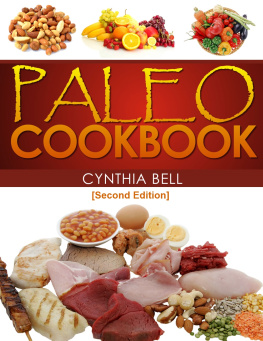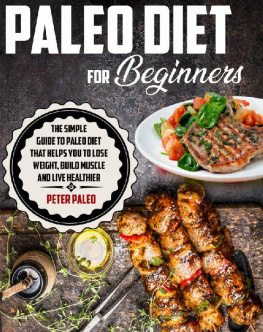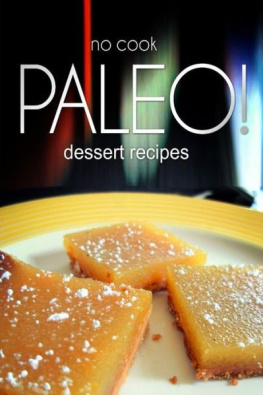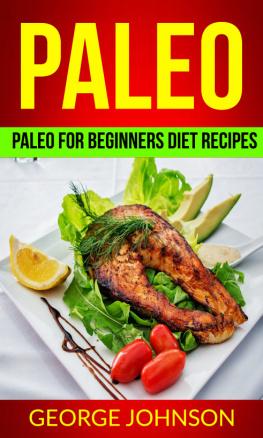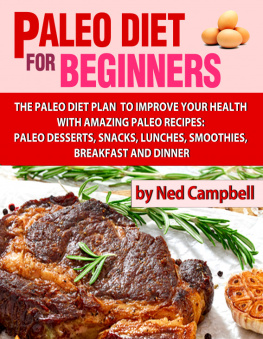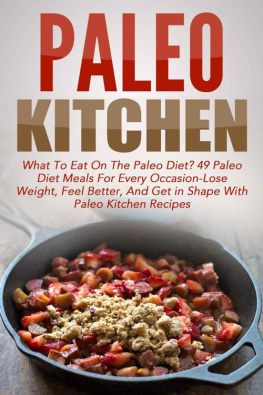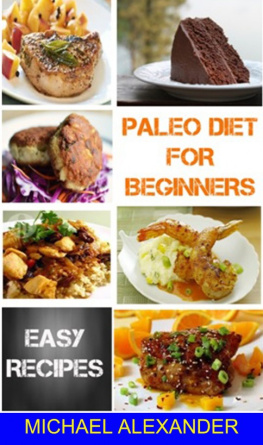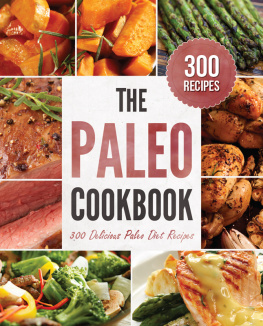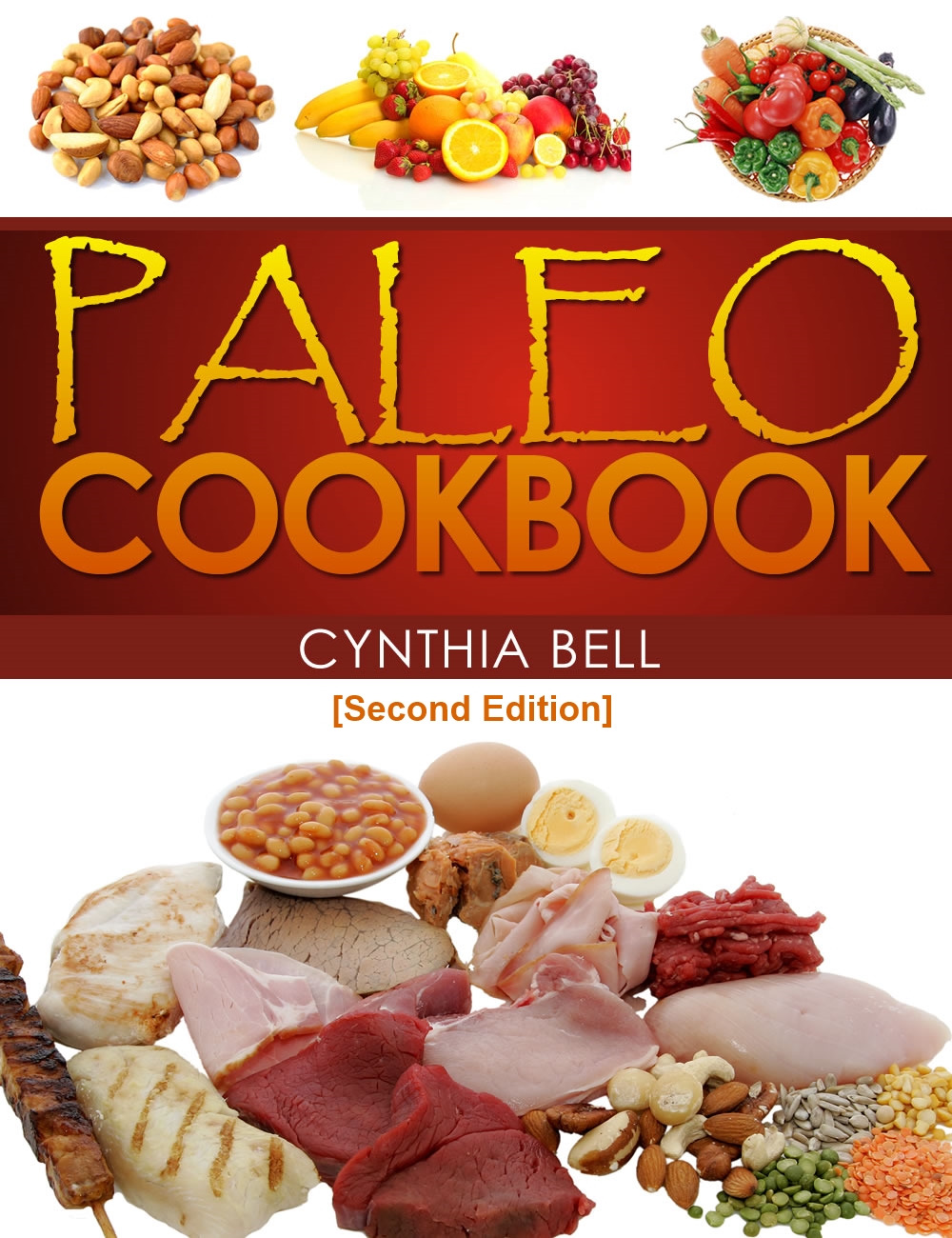All rights reserved.
Paleo Cookbook Introduction
The people of the Stone Age were believed to be strong andhealthy with long life spans and little illnesses, at least now what weexperience today. Back then, they did not have the choices and options we do. They did not have grocery stores in which to shop. All of their food came fromhunting the meat and foraging for the fruits and vegetables that grew in thewild.
We can learn a lot from our Stone Age ancestors when itcomes to diet. The food they ate gave them plenty of energy, helped them tomaintain good weight levels, and kept them healthy overall. This is becausethey received all the nutrient necessary for their healthy from their diet. The foods they ate give them antioxidants, carbohydrates, fats, proteins,phytosterols, and vitamins. This is why the Paleo diet is so popular today. People on this diet find they are able to overcome issues due to excessiveweight gain because they lose the weight and then maintain their weight levels.
The Paleo diet offers the very foods that help to facilitatea healthy weight because the diet is high in fiber. This may sound ironicsince whole grains are not a part of the diet plan, but the fiber comes fromwhole vegetables, fruits and even the roots. The Paleo Diet is similar to theAtkins diet in the respect there are allowed healthy portions of meats and even"good" fats. Nuts, meats, and olives are encouraged to be a part ofthe daily menu plan.
The biggest difference between the Paleo Diet and most allover diets are the foods on the avoid list. Paleo Diet allows no grains, whichmeans no wheat, barley, quinoa, buckwheat, rice, oats, maize, millet, rye, andcorn. There are no beans or legumes on the Paleo Diet, no lentils and nomiso. Also, dairy foods are avoided. In cases where a recipe calls for rice,use steamed vegetables instead. The recipes use almond and coconut flours inplace of wheat.
All meats and fish are allowed and strongly encouraged onthe Paleo Diet. All fowl, fish, beef, pork, bison, all wild animals, and birdsare a part of the meal plan. If you consider what the Stone Age ancestors ate,they probably hunted whatever animal, fish or bird they were able to hunt andkill. They held a definite gluten free, high fat, high fiber diet. They didnot eat processed foods or bleached flours. They did not eat artificialsweeteners. They diet and lifestyle proved to make them a healthy people.
What is the Paleo Diet?
Also known as the caveman diet and the Stone Age diet, thePaleo diet is a diet which is low in sugar, low in sodium, largely dairy freeand relatively high in protein. Its a diet based on the foods which would havebeen available to our pre-agrarian Neolithic ancestors. The Paleo diet isnt acarb-free or low carb diet, per se, but it is free of grains, withcarbohydrates coming from fresh vegetables and fruits rather than grains.
This is also a diet which steers clear of processed foods,at least for the most part and any processed foods included in the diet areas minimally changed from their natural state as possible. While you obviouslydont have to hunt or gather your own ingredients (and to be honest, the dietdoes include many vegetables which werent really developed until we started tosettle down in agrarian communities), the idea is to avoid the modern processedfoods which can wreak havoc on your health.
Better health is really the main goal of the diet and whileit isnt actually geared towards weight loss, many people who adopt the Paleodiet do indeed experience weight loss, especially when combined with regularexercise. It really comes down to common sense for the most part. The Paleodiet is rich in natural, fresh foods in short, the kind of food which we knowthat we should be eating in the first place.
The recipes in this book are made using these
Ingredients:
fresh produce, meat and nuts are the major players in thesePaleo diet recipes. Following this diet will require a little bit of adjustmenton your part and a little more time in the kitchen, at least until you get thehang of things but once you start enjoying the health benefits of the Paleodiet, we think youll agree its a change well worth making. From main dishesto salads, soups to desserts and breakfast and brunch, these recipes cover allof the basics so without further ado, lets get cooking, Paleo style!
Entrees
Roasted Turkey with Balsamic Glaze and Apples
Number of servings: 8 10
Ingredients:
1 medium-sized turkey (10 15 lbs.), thawed
10 Granny Smith apples, cored and halved (peeling is optional)
4 sprigs of rosemary
4 cloves of garlic, crushed
cup balsamic vinegar
cup olive oil
1 tbsp salt
black pepper, to taste
Preparation:
Preheat your oven to 325 F. Remove the gizzards from the turkey,then rinse the turkey well and pat dry with paper towels. Truss up the legswith string. Place the rosemary sprigs and 2 apple halves inside of the birdand place the turkey, breast up, in a large roasting pan. Surround the turkeywith apple halves and drizzle with the balsamic vinegar and olive oil. Sprinklethe turkey with the salt and black pepper.
Place the roasting pan on the lowest rack in your oven androast for 15 minutes per pound a 15 pound turkey will take just a littleunder 4 hours. Check the turkey periodically after its been roasting for about2 hours; if the skin starts to brown earlier than youd like, cover theroasting pan with foil to slow down browning. Test the turkey with a meatthermometer placed deep into the flesh of the thigh. When the thermometer reads175 F, the turkey is done and is safe to eat. Remove the roasting pan from theoven and allow the turkey to rest for at least 20 minutes. Carve and serve.
Gluten Free Chicken Piccata
Number of servings: 4
Ingredients:
4 chicken breast halves
1 cup chicken or vegetable stock
cup of almond flour
cup of olive oil
cup of capers
cup of Italian parsley, chopped
cup of lemon juice (about 2 lemons worth of juice)
tsp salt
tsp Italian seasoning
black pepper, to taste
Preparation:
Butterfly the chicken breast halves; cut them into twopieces after butterflying if theyre especially large. Place the chickenbetween two pieces of parchment paper or wax paper and using a cast ironskillet or mallet, pound the chicken breasts until theyre about thick.
After flattening the chicken breasts, mix the almond flour,Italian seasoning and salt in a bowl; pour the flour mixture on a plate. Dipthe chicken breast pieces in water and dredge in the almond flour mixture tocoat.
Heat half of the olive oil in a large skillet overmedium-high heat. Brown the chicken pieces well on both sides (this will takeabout 3 minutes per side); you will probably need to do this in two batches.Place the browned chicken breasts on a plate in a warm oven to stay warm whileyou make the sauce.
Deglaze the skillet with the chicken or vegetable stock andadd the capers and lemon juice, then bring to a simmer over medium-high heatuntil reduced by half. Whisk in the remaining olive oil to incorporate. Placethe chicken on individual serving plates, season to taste with black pepper andtop with the sauce and chopped parsley before serving.
Chicken with Cherries and Kale
Number of servings: 4
Ingredients:
1 lbs. chicken breast, boneless and skinless
10 ounces of fresh or frozen cherries

